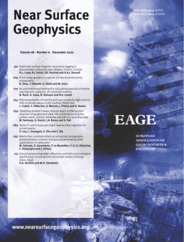
Full text loading...
 , Youcef Bouzidi1, Saif Ullah1, Muhammad Asim1
, Youcef Bouzidi1, Saif Ullah1, Muhammad Asim1
In this paper, we propose an enhanced version of the multi‐gradient measurement technique, called full‐range gradient survey, for 2D electrical resistivity tomography. To demonstrate its effectiveness, we conducted numerical simulations and field experiments to highlight the advantages of the new data‐acquisition technique on the traditional electrode arrays and the original multi‐gradient measurement technique. A comparison of the imaging capabilities of the full‐range gradient technique with the dipole–dipole, Schlumberger and multi‐gradient shows that the former inherits all the advantages of the multi‐gradient technique as well as the sensitivity of the traditional three‐ and four‐electrode arrays. The new survey technique has a better pseudo‐section coverage, a much smaller geometrical factor, and less noise contamination than the dipole–dipole survey. It significantly improves the subsurface images of the Schlumberger and original multi‐gradient data. The numerical and field experiments both demonstrate that the full‐range gradient survey can be an alternative to all the traditional electrode arrays and original multi‐gradient surveys of 2D electrical resistivity tomography to obtain better quality and higher resolution images of near‐surface targets.

Article metrics loading...

Full text loading...
References


Data & Media loading...

